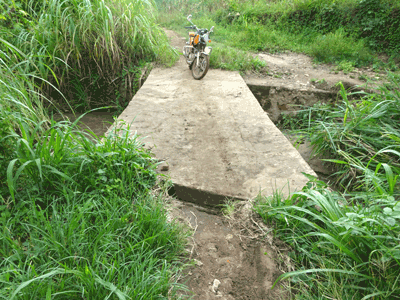
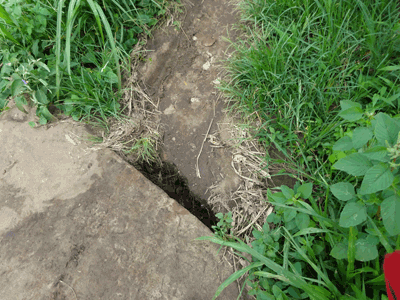
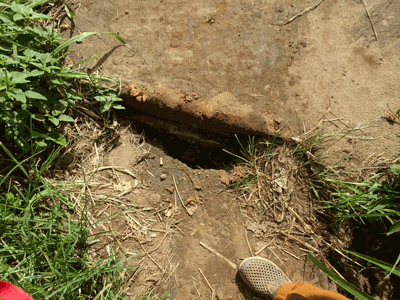
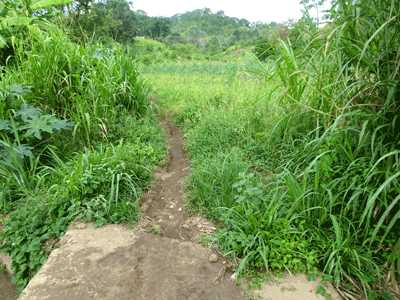
It is a great topic of conversation especially as for many in Tanzania it is about acquiring food for the whole year. The pre-harvest season, known as the lean period, is the most difficult because there is nothing to eat and the harvest has not yet been done. This is the moment when you eat the maize grilled on the coal, having caught some ears here and there.
The rains have been scarce and the maize stalks have remained lean and it is to be feared a famine, even slight. The village of Chabima, however, has experienced more rainfall than in the plain and should survive. Since the beginning of the month, about 200 millimetres of rain have fallen, which has encouraged farmers to harvest and prepare fields for beans. On our side we have expanded the test field of Chole juu, and planted mango trees of course, but also peaches, apple trees, pears, grapes, macadamia, pomegranates, cashew nut trees, avocados, oil palms, coconut trees, bread trees, mulberries, orange trees, lemon trees, tangerines. These days we will add two fig trees and four grape plants of a variety similar to the Red Globe. We also bought two orange plants Pixie, which are supposed to be like a temperate, bright orange country variety.
Each plant has been mulched and melons and watermelons were planted as a cover plant, which retains moisture.
As planned. the bridge has been washed away. There is only one board left, we must take the detour further upstream, by the old ford, where four boards have been installed. It seems that the construction of the bridge, in agreement with all users of this bridge, is not yet topical.
Despite an attempt to channel the water upstream of the bridge in early February, the water has scuffed the apron.




On Sunday, March 23 we met three of us to do the work. Some passers-by joined us, except for those of the Mkolole Church which forbids its followers to work on Sundays.
- So your god forbids you to help people?
- Yes he does, the man answered me without thinking.
So we cleaned up the grass and reeds and flattened the whole. We then dug two small drainage channels so that the water would be carried to the sides and not on the bridge structure.
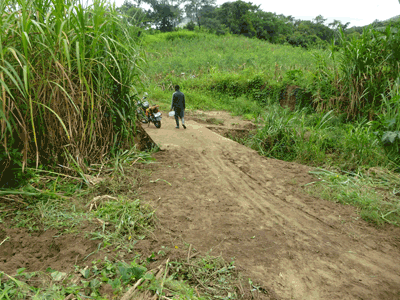
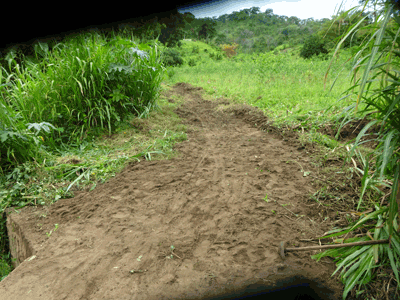
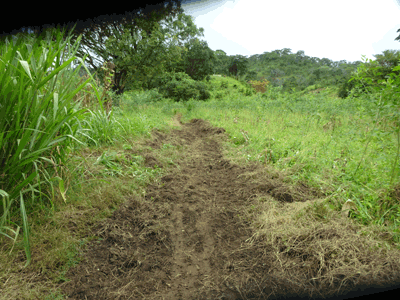
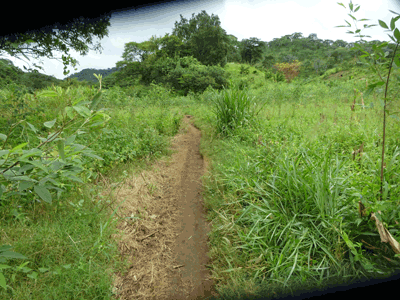
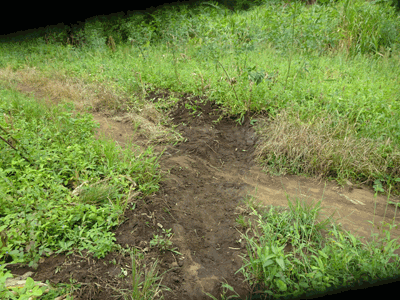
The road is beginning to be cleaned up, especially in Mlolwa area. A district manager has gathered volunteers to clean up the area.
On my side I started to repair the road in the eastern part of Jumbebibi, the one that reaches the pass of Chole. Armed with a hoe, a pick and a shovel I set out to fill the gully dug by the ravine and flatten the road. Every time passers-by joined me which means that the work is almost finished.
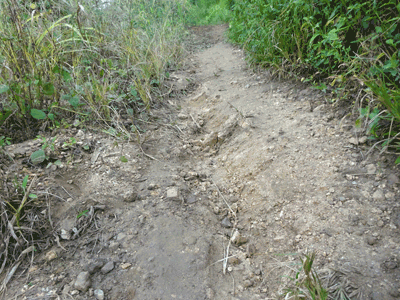
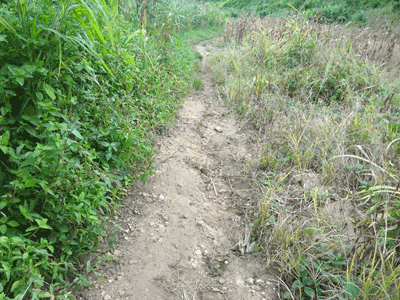
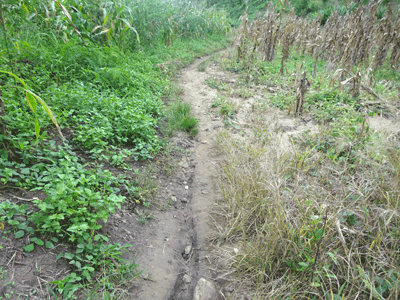
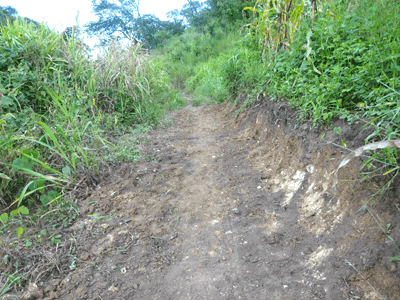
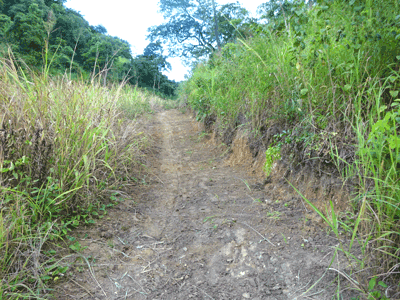

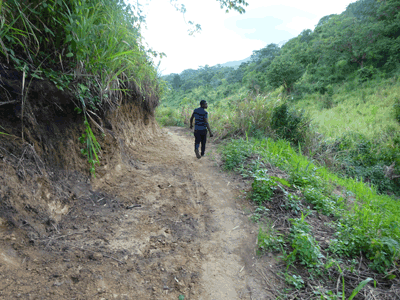
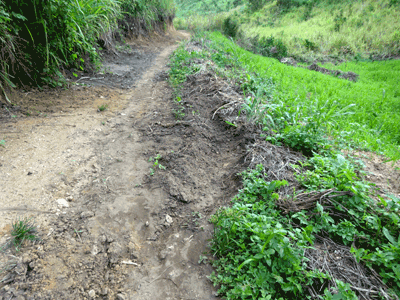
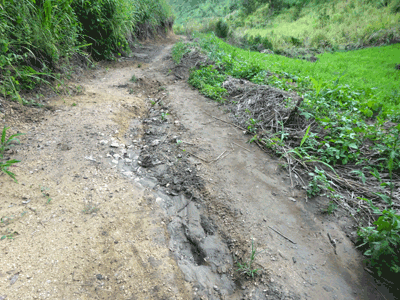 Rainwater
drains the middle of the road. This requires to dig the side, fill the
center and dig a flow channel on the north side, towards the bottom.
Rainwater
drains the middle of the road. This requires to dig the side, fill the
center and dig a flow channel on the north side, towards the bottom.
The well being muddy we had to clean it. I wanted to do it last year when I saw that it did not give enough water but the well-diggers from Dumila said that a new one had to be dug beside. "How deep", I asked. - "Eight meters". Which is the depth of the well already in place. I had declined the offer, I did not see why in this case they had not suggested to increase the depth. Eight meters is the standard depth, in fact. These days the pump was just below the surface, and after five minutes of pumping it was at surface level, turning empty.
The well had been so badly built that it was impossible to slip into the maintenance hatch. The wooden ladder did not pass, nor the small bucket, a bucket of fifteen liters. So we demolished the frame work, but without damaging the edge. The pit men cleaned up the bottom, pulling out an impressive pile of mud and bricks that had fallen from the wall. They were only there for the cleaning, and the mason decided to come back the next day to repair the walls and redo the frame work. But it rained during the night, a heavy rain, which postponed the work to another day. To date the water level has dropped a little but not enough to reach the damaged par of the wall. So we covered with a tarp to avoid dust and the fall of small animals at the bottom.
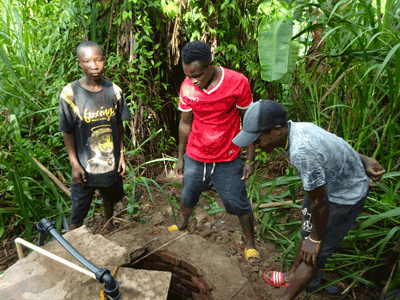
 The drain pipe has been diverted to the
outside (right in the photo) while waiting for as much water as possible
to be pumped.
The drain pipe has been diverted to the
outside (right in the photo) while waiting for as much water as possible
to be pumped.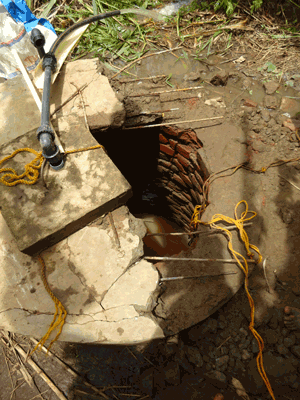
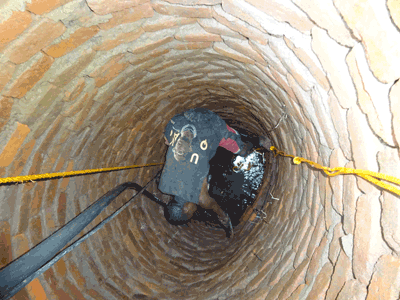
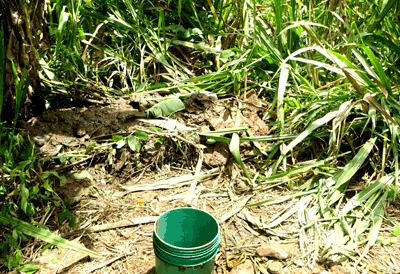
This time it is the large tank, connected to a gutter, a
two thousand liter tank that threatened to fall sideways. So we remade
the basement, in the shape of a circle this time, as well as the
basement of the store tank.
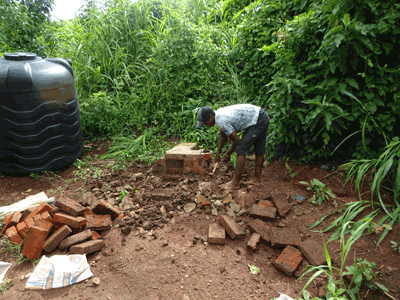
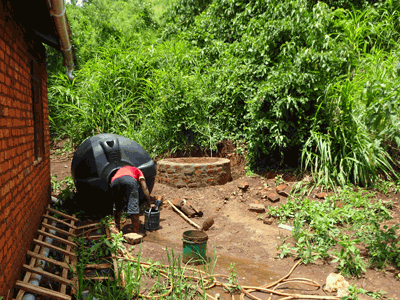
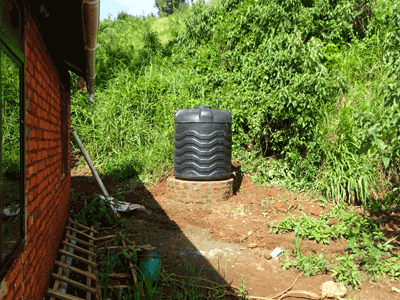
The tank was also cleaned. Before putting it back in place we waited two days for the base to dry. The gutter, on the left, will be quickly put back in place.
We were taking a break, on my terrace, having tea with homemade cookies as usual. Mikaeli had arrived just before Kimsi and asked for the bike repair equipment, having had a puncture in the back. It was between eleven and noon, the sun was already hot. Mikaeli went to the store where he had left his bike, with the pump, and once the tea was ready we called him. He arrived, sat down and we immediately heard a blast, from the forest it seemed to us, far behind the store. The three of us wondered about the origin of this detonation, finding it unlikely that someone would have started hunting so close to a house and at this time of day. Then suddenly Kimsi said it was Mikaeli’s bike, that the front tire had burst. Mikaeli was surprised but I immediately added to it, holding back from laughing, and Mikaeli ran off to see the damage on his bike. He came back and announced that there was no explosion, that his bike had nothing to do with it. A few minutes after arrived Ponsiani with his fist tight. He showed what he had in the hand, fragments of battery : he had directly connected his phone battery to its solar panel which had made it explode. While laughing we of course invited him to share tea with us.
In the middle of the afternoon I was called by Anza, who was then working with Kimsi in their field of Ifuru. Kimsi was writhing in pain, he had to go to the hospital. He had actually climbed a mango tree and had tried to cut, with a bush knife, a master branch that sprang up relatively vertically. The branch fell on his bust, crushing it. He managed to clear it but it fell on his thigh. As we had also warned Luka his father we went there together by motorcycle, planning to take the second bike too. We were supposed to join them at the top of Mlolwa, but when we got there Anza phoned us to go directly to Kimsi’s. He had carried him on his back all the way there, Kimsi moaning and groaning all along the way - I heard him on the phone when they were still in Ifuru.
Here we changed it, because he was in a rather dirty work outfit, which took time because he really suffered. When we sat him up, I heard a crack, a bone probably. It was really bad.
So we carried him on a motorcycle. At the clinic, however, the nurse gave him a shot of diclofenac, a non-steroidal antihistamine, to ease the pain during the trip that took us an hour, driving very slowly. Once in hospital, he was recorded and examined. The x-ray showed no fracture. It happened about ten days ago, he does not feel pain more than in his shoulder. As it is time to harvest the maize and plant the beans, this is a bad time. We had returned to Chole around ten o'clock in the evening.
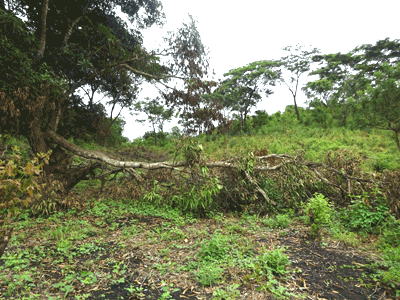
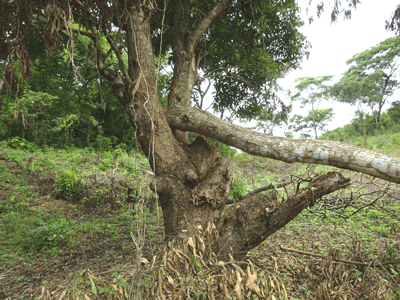
Ifuru is a small valley that Kimsi has been renting since last year. Several times cattle have passed through it, damaging the soil or the crops. It is also a valley visited by baboons, so it is necessary to monitor the field against their intrusions during the season.
This is where Kimsi tried to cut off a mango tree.
He planted rice and maize, all of which seemed to have given good results, according to him. The rice is grown in a rain-fed, non-irrigated mode, which gives it a better taste. It has not yet flowered.
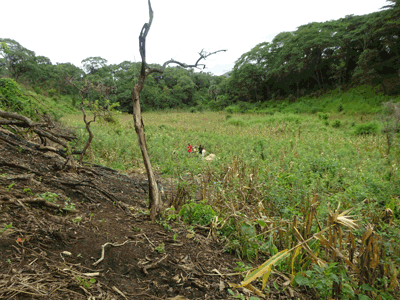
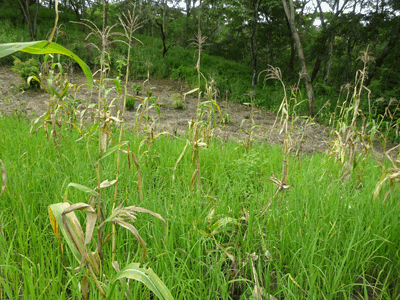
The upstream part of the Ifuru field, which is about two hectares. The "hollow" part (the talweg) was planted with rain rice.
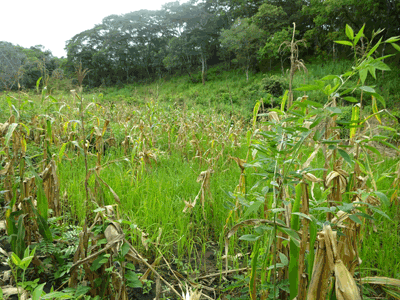

Maizeis being harvested.
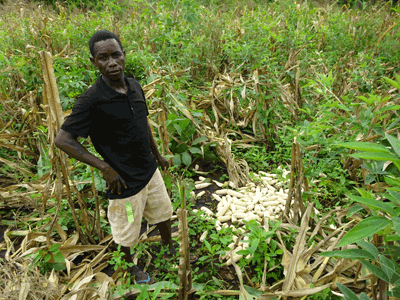
Kimsi next to a pile of maize. The maize is transported home where it is ginned and bagged.